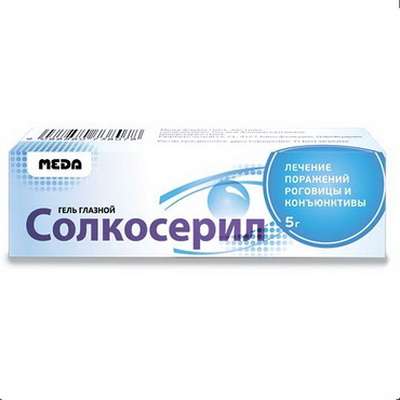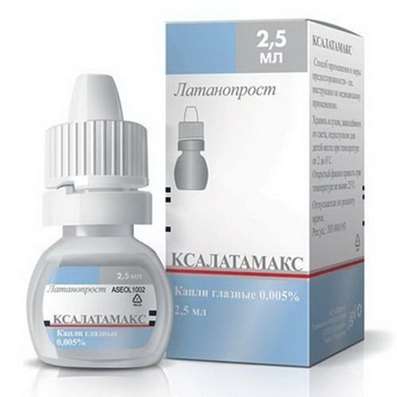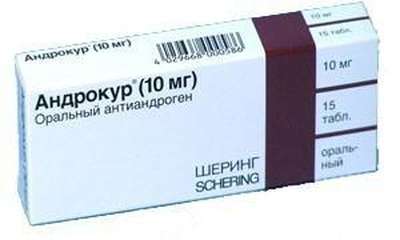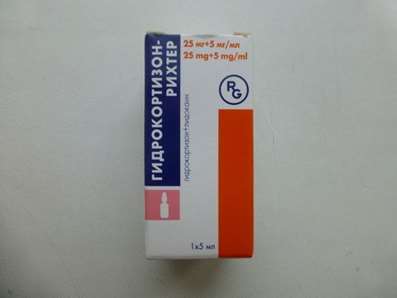Instruction for use: Xefocam rapid
I want this, give me price
Active substance Lornoxicam
└ĎŇ M01AC05 Lornoxicam
Pharmacological group
Non-steroidal anti-inflammatory drug (NSAIDs) [NSAIDs - Oxicams]
Nosological classification (ICD-10)
R52.2 Other constant pain
Pain syndrome, rheumatic origin, Pain at vertebral lesions, Pain in the chamber, Pain for burns, Pain syndrome weak or moderate, Perioperative pain,Moderate to severe pain, Moderately or weakly expressed pain syndrome, Moderate to severe pain, Ear pain of otitis, Neuropathic pain, neuropathic pain
R52.9 Unspecified Pain
Pain after cholecystectomy, Pain shooting, Non-malignant pain, Obstetric and gynecological pain, Pain syndrome, Pain in the postoperative period, Pain in the postoperative period after orthopedic surgery, Pain of inflammatory genesis, Pain than cancer genesis, Pain syndrome after diagnostic procedures, Pain after surgery Diagnostic, Pain after surgery, Pain after orthopedic surgery, Pain after injuries, Pain after the removal of hemorrhoids, Pain at the non-rheumatic inflammation of nature, Pain in inflammatory lesions of the peripheral nervous system, Pain in diabetic neuropathy, Pain in acute inflammatory diseases of the musculoskeletal system, Pain when the tendon pathology, Pain smooth muscle spasm, Pain spasm of smooth muscles (renal and biliary colic, intestinal spasms, dysmenorrhea), Pain spasm of smooth muscles of internal organs, Pain spasm of smooth muscles of internal organs (kidney and biliary colic, intestinal spasms, dysmenorrhea), Pain in trauma syndrome, Pain with injuries and after surgical interventions, Pain in chronic inflammatory diseases of the musculoskeletal system, Pain with duodenal ulcer, Pain syndrome in gastric ulcer, Pain syndrome in gastric ulcer and duodenal ulcer, pain, Pain during menstruation, pain syndromes, painful condition, Painful foot fatigue, Sore gums when wearing dentures, Soreness of the cranial nerves exit points, Painful menstrual irregularities, Painful dressings, Painful muscle spasm, Painful teeth growth, Melosalgia, Pain in the area of the surgical wound, Pain in the postoperative period, Pain in the body, Pain after diagnostic procedures, Pain after orthopedic surgery, Pain after surgery, The pains of the flu, Pain in diabetic polyneuropathy, Pain for burns, Pain during sexual intercourse, Pain during diagnostic procedures, Pain during therapeutic procedures, for colds Pain, Pain in sinusitis, Pain in trauma, Pain traumatic, The pain in the postoperative period, Pain after diagnostic procedures, The pain after sclerotherapy, Pain after surgery, postoperative Pain, Pain postoperative and posttraumatic, posttraumatic pain, Pain when swallowing, Pain in infectious and inflammatory diseases of the upper respiratory tract, The pain of burns, The pain in traumatic muscle injury, Pain in trauma, The pain of tooth extraction, The pain of traumatic origin, Pain caused by spasm of smooth muscles, Expressed pain syndrome, Expressed pain syndrome, traumatic origin, Postoperative pain, Post-traumatic pain, Post-traumatic pain syndrome, Torpid pain, Traumatic pain, Traumatic pain, Mild pain, Moderately severe pain, Moderate pain, Polyarthralgia with polymyositis
Composition
Tablets covered with a film membrane 1 tab.
core
active substance:
lornoxicam 8 mg
auxiliary substances: calcium stearate - 1.6 mg; giprolose - 16 mg; sodium bicarbonate - 40 mg; giproloza low-substituted - 48 mg; MCC - 96 mg; calcium hydrophosphate - 110.4 mg
membrane film: propylene glycol - about 1.1 mg; talc - about 3.6 mg; titanium dioxide - about 3.6 mg; hypromellose - about 5.7 mg
Description of dosage form
Round biconvex tablets, covered with a film coat from white to light yellow color.
pharmachologic effect
Pharmacological action - anti-inflammatory, analgesic, inhibitory COX.
Pharmacodynamics
Lornoxicam is an NSAID (non-steroidal anti-inflammatory drug), has a pronounced analgesic and anti-inflammatory effect, belongs to the class of oxycomas.
The mechanism of action is based on suppression of the synthesis of PG (prostaglandins) (inhibition of the enzyme COX (cyclooxygenase)), leading to suppression of inflammation.
Lornoxicam does not affect the main indicators of the body: body temperature, heart rate (heart rate), blood pressure, ECG data (electrocardiogram, electrocardiography), spirometry.
The analgesic effect of lornoxicam is not associated with narcotic effects. The drug Xefocam Rapid does not depress the breath, does not cause drug dependence.
Due to the presence of a locally irritating effect on the gastrointestinal tract and the systemic ulcerogenic effect associated with the suppression of GHG synthesis, complications from the gastrointestinal tract are often undesirable effects in the treatment of NSAIDs.
Pharmacokinetics
Lornoxicam is quickly and almost completely absorbed from the digestive tract.
Cmax in the plasma are reached 30 minutes after ingestion. Cmax of Xsefokam Rapid is higher than Cmax of Xsefokam tablet and is equivalent to Cmax for dosage forms of lornoxicam intended for parenteral administration. Absolute bioavailability of the drug Xefocam Rapid tablets coated with a film coat is 90-100% and is equivalent to bioavailability of the drug Xefocam tablets. The effect of the first passage of the drug through the liver is not observed. T1 / 2 - 3-4 hours.
In plasma, lornoxicam is detected unchanged and in the form of its hydroxylated metabolite. The hydroxylated metabolite has no pharmacological activity. The association of lornoxicam with plasma proteins is 99% and does not depend on its concentration. Lornoxicam is completely metabolized with the formation of a pharmacologically inactive metabolite; about 2/3 is excreted with bile and 1/3 - through the kidneys.
Lornoxicam is completely metabolized in the liver initially with the formation of inactive 5-hydroxylornoxicam. The isozyme CYP2C9 is involved in the metabolism. As a result of genetic polymorphism, there are individuals with slowed and intensive metabolism, which can be expressed in a marked increase in lornoxicam levels in plasma in persons with slow metabolism.
Lornoxicam does not induce liver enzymes, does not cumulate after repeated intake of recommended doses.
When taking lornoxicam with food at the same time, you can expect a decrease in Cmax and an increase in Tmax, as well as a decrease in suction of lornoxicam. In the elderly, the clearance is reduced by 30-40%. In patients with impaired hepatic or renal function, no significant changes in lornoxicam kinetics are observed, except for cumulation in patients with chronic liver disease after 7 days of treatment at a daily dose of 12 or 16 mg.
Indications for Xefocam« Rapid
Short-term treatment of pain syndrome from mild to moderate intensity.
Contraindications
hypersensitivity to lornoxicam or any of the excipients;
complete or incomplete combination of bronchial asthma, recurrent nasal polyposis or paranasal sinuses, rhinitis, angioedema, urticaria and intolerance of acetylsalicylic acid and other NSAIDs (including in the anamnesis);
hemorrhagic diathesis or bleeding disorders, as well as patients who underwent surgery with a risk of bleeding or incomplete hemostasis;
Decompensated heart failure;
erosive and ulcerative changes in the mucosa of the stomach or duodenum, active gastrointestinal bleeding; cerebrovascular or other bleeding;
gastrointestinal bleeding or perforation of an ulcer in anamnesis associated with the administration of NSAIDs;
active peptic ulcer or recurrent peptic ulcer in anamnesis;
inflammatory bowel disease (Crohn's disease, ulcerative colitis) in the phase of exacerbation;
severe hepatic impairment;
marked renal failure (serum creatinine level more than 300 μmol / l), progressive kidney disease, confirmed hyperkalemia;
period after aortocoronary shunting;
pregnancy and the period of breastfeeding;
patients under the age of 18 (due to lack of clinical experience).
Carefully
For the following violations, Xephocam Rapid should be given only after a thorough evaluation of the expected benefit of therapy and the possible risk:
- impaired renal function of the lung (serum creatinine 150-300 μmol / l) and moderate degree (serum creatinine 300-700 μmol / l), maintenance of renal blood flow depends on the level of renal GHG. The use of lornoxicam should be discontinued if the kidney function worsens during treatment. Control of kidney function should be performed in patients who underwent extensive surgery, patients with heart failure receiving diuretics, as well as in the case of drugs with proven or suspected nephrotoxicity;
- Violation of the blood coagulation system - recommended thorough clinical observation and evaluation of laboratory indicators, for example APTTV;
- violation of liver function (cirrhosis of the liver) - regular clinical observation and evaluation of laboratory parameters should be carried out. when treatment with lornoxicam in a daily dose of 12-16 mg, cumulation of the drug is possible;
- long-term treatment (more than 3 months) - regular evaluation of laboratory parameters of blood (Hb), kidney function (creatinine) and liver enzymes is recommended;
- patients older than 65 years - recommended control of liver and kidney function. Use with caution in the elderly in the postoperative period;
- simultaneous administration with other NSAIDs, including selective COX-2 inhibitors, should be avoided;
- gastrointestinal bleeding, ulceration, perforation, which were previously noted with the use of all NSAIDs at any stage of treatment and can lead to death;
- the presence of Helicobacter pylori;
- the phenomenon of gastrointestinal toxicity in the history, in particular in the elderly;
- simultaneous administration of such drugs as oral GCS (for example prednisolone), anticoagulants (eg warfarin), SSRIs (eg citalopram, fluoxetine, paroxetine, sertraline) and antiplatelet drugs (eg acetylsalicylic acid, clopidogrel);
- simultaneous use of NSAIDs and heparin in spinal and epidural anesthesia (increased risk of hematoma);
- Gastrointestinal pathology in the anamnesis (ulcerative colitis, Crohn's disease), because the patient's condition may worsen;
- arterial hypertension and / or heart failure in history, tk. when using NSAIDs, fluid retention and development of edema were noted;
- the presence of diseases of peripheral arteries or cerebrovascular diseases, the presence of risk factors for the development of cardiovascular diseases, such as hypertension, hyperlipidemia, diabetes, smoking (should be prescribed lornoxicam only after a thorough assessment of the expected benefits of therapy and possible risk);
- severe skin reactions leading to death, incl. exfoliative dermatitis, Stevens-Johnson syndrome and toxic epidermal necrolysis;
- simultaneous use of NSAIDs and tacrolimus - may lead to an increased risk of nephrotoxicity due to oppression of prostacyclin synthesis in the kidneys;
- women who want to become pregnant, tk. the use of lornoxicam, as well as any drug that suppresses the synthesis of PG, can disrupt the ability to fertilize.
pregnancy and lactation
Due to the lack of data on the use of Xephocam Rapid during pregnancy and lactation, lornoxicam should not be used.
Suppressing the synthesis of PG can have an adverse effect on pregnancy and / or fetal development.
The use of inhibitors of GHG synthesis early in pregnancy increases the risk of miscarriage or the development of heart disease. It is believed that the risk is proportional to the dose and duration of treatment.
Assignment of inhibitors of GHG synthesis in the III trimester of pregnancy can lead to toxic effects on the heart and lungs of the fetus (premature closure of the arterial duct and the development of pulmonary hypertension), as well as impaired renal function and hence - to reduce the volume of the amniotic fluid. Late use may cause prolonged bleeding time in the mother and fetus, as well as suppress the contractile activity of the uterus, which may delay or prolong the period of labor.
Side effects
The most common adverse reactions to NSAIDs are noted from the GI tract: peptic ulcers, perforation or gastrointestinal bleeding can develop. After applying NSAIDs, nausea, vomiting, diarrhea, flatulence, constipation, dyspepsia, abdominal pain, melena, bloody vomiting, ulcerative stomatitis, exacerbation of colitis or Crohn's disease were noted. In more rare cases, gastritis was observed.
Approximately 20% of patients receiving lornoxicam may develop adverse reactions. The most frequent are nausea, vomiting and diarrhea, dyspeptic phenomena, indigestion, stomach pain.
In each particular category, side effects are grouped according to the system-organ class and are presented in descending order of frequency.
Very often - 1/10 appointments (> 10%); often - 1/100 appointments (> 1% and <10%); infrequently - 1/1000 appointments (> 0.1% and <1%); rarely - 1/10000 appointments (> 0.01% and <0.1%); very rarely - 1/10000 prescriptions (<0.01%); the frequency is unknown - based on the available data, an estimate is not possible.
Infections and infestations: rarely - pharyngitis.
The system of hematopoiesis and lymphatic system: rarely - anemia, thrombocytopenia, leukopenia, increased bleeding time; very rarely - ecchymosis.
Immune system disorders: rarely - hypersensitivity.
Metabolic and eating disorders: infrequently - anorexia, weight change.
Mental disorders: infrequently - sleep disturbance, depression; rarely confusion, nervousness, anxiety.
Neurological disorders: often - short-term headaches of low intensity, dizziness; rarely - somnolentia, paresthesia, taste disorder, tremor, migraine.
Visual disturbances: infrequently - conjunctivitis; rarely - vision disorders.
Disorders of the vestibular apparatus: infrequently - dizziness, noise in the ears.
Cardiological disorders: infrequent - palpitation, tachycardia, edema, heart failure.
Vascular disorders: infrequent - a rush of blood to the face; rarely - arterial hypertension, hot flushes, hemorrhage, hematoma.
Disorders in the respiratory system, thorax and mediastinum: infrequently - rhinitis; rarely - dyspnea, cough, bronchospasm.
Gastrointestinal disorders: often - nausea, abdominal pain, diarrhea, diarrhea, vomiting; infrequent - constipation, flatulence, belching, dry mouth, gastritis, peptic ulcer, epigastric pain, duodenal ulcer, ulceration in the oral cavity; rarely - melena, bloody vomiting, stomatitis, esophagitis, gastroesophageal reflux, dysphagia, aphthous stomatitis, glossitis, perforated peptic ulcer.
Disorders of the hepatobiliary system: infrequent - increased indicators of liver function tests, ALT or ACT; rarely - a violation of liver function; very rarely - damage to hepatocytes.
Skin manifestations and disorders in the subcutaneous tissues: infrequent - rash, itching, sweating, erythematous rash, hives, alopecia; rarely - dermatitis, purpura; very rarely - edema, bullous reactions, Stevens-Johnson syndrome, toxic epidermal necrolysis.
Disorders of the musculoskeletal system and connective tissue: infrequently - arthralgia; rarely - pain in the bones, muscle spasms, myalgia.
Renal disorders and urinary disorders: rarely - nocturia, urination disorders, increased levels of urea and creatinine in the blood.
General manifestations and condition of the place of administration of the drug: infrequent - malaise, swelling of the face; rarely - asthenia.
Interaction
Simultaneous application of the drug Xefocam Rapid and:
- Cimetidine - increases the concentration of lornoxicam in the plasma. Interaction with ranitidine and antacid preparations was not revealed;
- anticoagulants or platelet aggregation inhibitors - bleeding time may be longer (increased risk of bleeding, MHO control required);
- fenprokumona - a decrease in the effectiveness of fenprokumone treatment;
- heparin - NSAIDs increase the risk of developing spinal / epidural hematoma with simultaneous application with heparin in spinal or epidural anesthesia;
- beta-blockers and ACE inhibitors - can reduce their hypotensive effect;
- diuretics - reduces diuretic effect and hypotensive effect of loop and thiazide diuretics;
- digoxin - reduces renal clearance of digoxin;
- Quinolone antibiotics - increases the risk of convulsive syndrome;
- other NSAIDs or GCS (glucocorticosteroids) - increases the risk of developing peptic ulcer or gastrointestinal bleeding;
- Methotrexate - increases the concentration of methotrexate in the serum;
- SSRIs (selective serotonin reuptake inhibitors) (eg citalopram, fluoxetine, paroxetine, sertraline) - increases the risk of gastrointestinal bleeding;
- lithium salts - can cause an increase in peak lithium concentrations in the plasma and thereby enhance the known side effects of lithium;
- cyclosporine - increases the nephrotoxicity of cyclosporine;
- derivatives of sulfonylureas - may enhance the hypoglycemic effect of the latter;
- tacrolimus - increased risk of nephrotoxic effect due to oppression of prostacyclin synthesis in the kidneys.
Eating can reduce absorption by 20% and increase the time to reach Cmax in the blood.
Dosing and Administration
Inside, squeezed with enough liquid.
Special dose selection for elderly patients is not required in the absence of kidney or liver failure, in which case the daily dose should be reduced.
For all patients, the appropriate dosing regimen should be based on an individual response to treatment.
On the first day of treatment, 16 mg in the starting dose and 8 mg can be administered 12 hours after administration. In the following days, the maximum daily dose should not exceed 16 mg. The usual intake of the drug is 8-16 mg / day (1-2 tablets).
To reduce the risk of developing adverse events from the gastrointestinal tract, a minimally effective dose should be used with the minimum possible short course.
Overdose
Symptoms: nausea and vomiting, cerebral symptoms (dizziness, visual disturbance, ataxia, passing into convulsions and to whom). There are changes in the function of the liver and kidneys and blood clotting disorders.
Treatment: with a real or suspected overdose, stop taking the medication. Thanks to a short T1 / 2, lornoxicam is rapidly excreted from the body. Dialysis is ineffective.
To date, a specific antidote is unknown. It is necessary to envisage carrying out usual urgent measures, including gastric lavage. Based on general principles, the use of activated charcoal, only if it is taken immediately after taking Xefocam Rapid, may lead to a decrease in the absorption of the drug. For the treatment of gastrointestinal disorders, analogues of PG or ranitidine may be used.
special instructions
Do not use the drug simultaneously with other NSAIDs.
If there are signs of liver damage (itchy skin, yellowing of the skin, nausea, vomiting, abdominal pain, darkening of the urine, increasing the level of liver transaminases), stop taking the drug and consult your doctor.
The drug can change the properties of platelets, but does not replace the preventive effect of acetylsalicylic acid in cardiovascular diseases.
Influence on the ability to drive vehicles and work with machinery. Patients who are dizzy and / or drowsy during treatment with lornoxicam should refrain from driving the car and managing the technique.
Form of issue
Tablets covered with a film membrane, 8 mg: in blisters for 6 or 10 pcs .; in a pack of cardboard 1, 2 blisters for 6 tables. or 1, 2, 3, 5, 10 or 25 blisters of 10 tab.
Conditions of leave from pharmacies
On prescription.
Storage conditions for Xefocam« Rapid
At a temperature not exceeding 30 ░ C.
Keep out of the reach of children.
Shelf life of Xefocam« Rapid
2 years.
Do not use after the expiry date printed on the package.

 Cart
Cart





